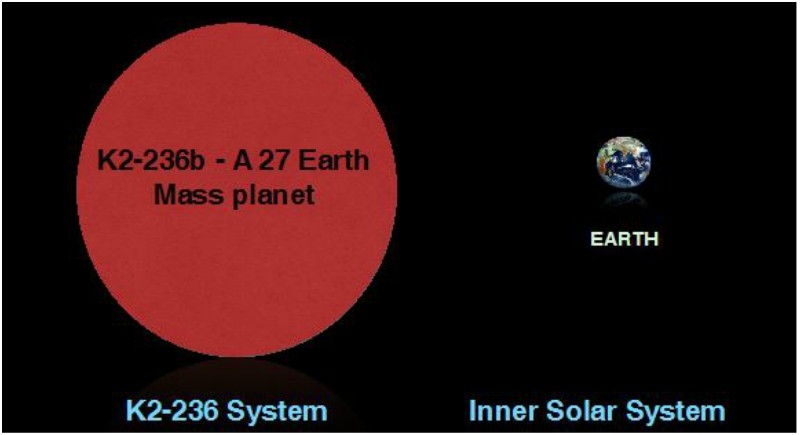Indian Scientists discovers big brother of Earth: K2-236 planet 27 times bigger than ours
Ahmedabad, June 12: Our Indian Scientists took the space science a step ahead by finding out a sub-Saturn or super-Neptune size exoplanet, which is about 27 times the mass of Earth and six times the radius of Earth. The planet revolves around a Sun-like star, some 600 light years away from Earth. The team of scientists belongs to the Physical Research Laboratory (PRL), Ahmedabad.

The planet goes around the star in about 19.5days (one year of that planet). The discovery was made by measuring the mass of the planet using the indigenously designed “PRL Advance Radial-velocity Abu-sky Search” (PARAS) spectrograph integrated with 1.2m Telescope at PRL’s Gurushikhar Observatory in Mount Abu.
This is the first of its kind spectrograph in the country, which can measure the mass of a planet going around a star and with this discovery India has joined a handful of countries, which have discovered planets around stars. Very few such spectrographs exist around the world (mostly in the USA and in Europe) that can do such precise measurements. The surface temperature of the planet is around 600°C as it is very close to the host star (7 times nearer than Earth-Sun distance).
This might make it unhabitable, but such a discovery is of importance for understanding the formation mechanism of such super-Neptune or sub-Saturn kind of planets, that are too close to the host star.
The name of the host star is EPIC 211945201 or K2-236. Hence the planet will be known as EPIC 211945201b or K2-236b. Initially, the source was found to be a planetary candidate from NASA K2 (Kepler2) photometry because it was transiting, that is the planet body comes in between the star and the observer on Earth as it goes around the star and therefore it blocks a tiny amount of star-light. By measuring the amount of light blocked by the planet body, we can measure the diameter or size of the planet. It was found to be 6 Earth radii. However, The K2 photometric data combined with false positive probability calculations was not sufficient to confirm the planetary nature of the system. Therefore, an independent measurement of the mass of the body was necessary for the discovery, which was made by the PARAS spectrograph.